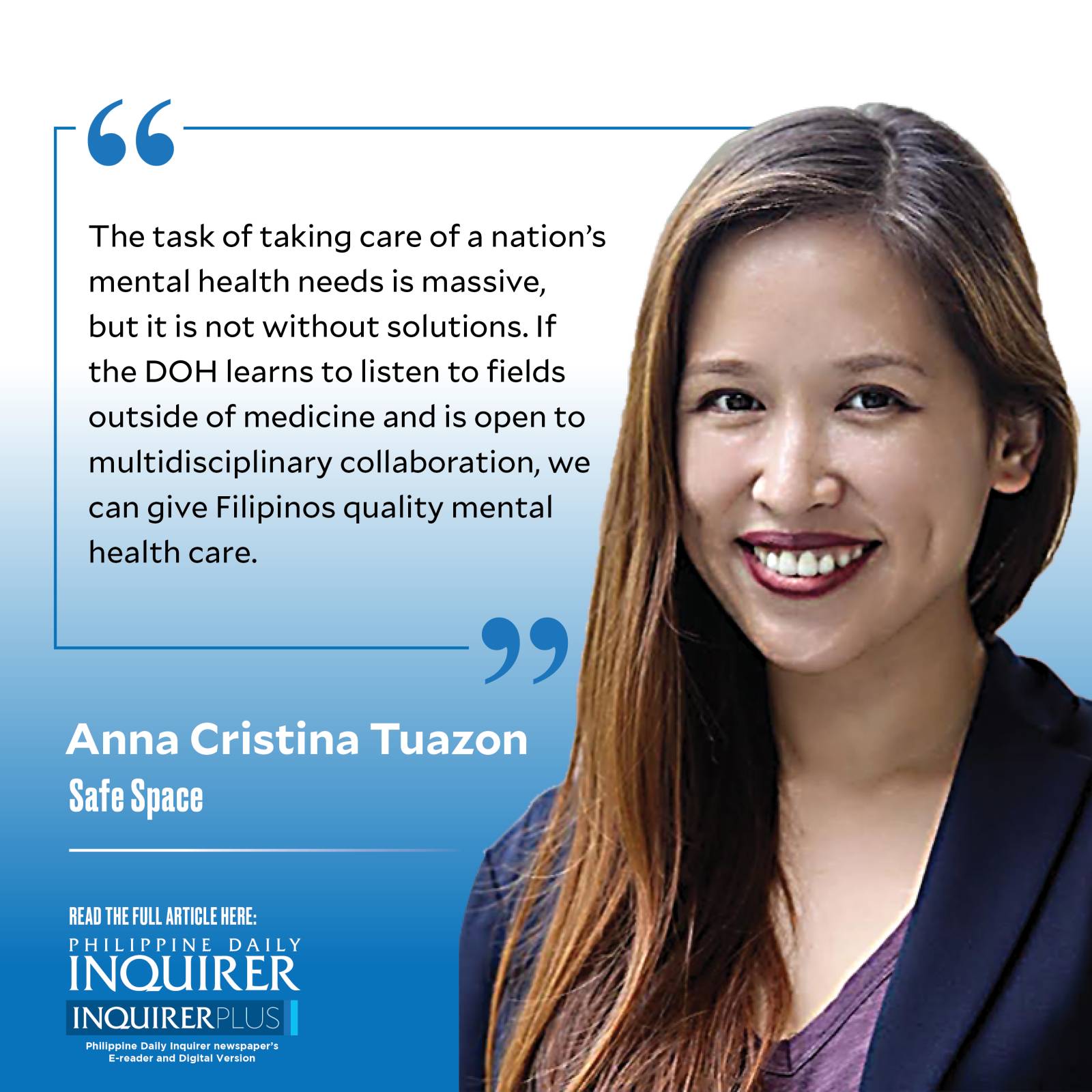The case for primary mental health care

After a year since the President took office, a secretary for the Department of Health (DOH) has finally been appointed. Being in charge of the nation’s health, in the midst of pandemic recovery and other continuing health crises, requires that DOH Secretary Dr. Teodoro “Ted” Herbosa get to work immediately. He must be getting bombarded right now by well-wishers, as he faces mountains of challenges ahead of him.
I would like to put my two cents’ worth and remind the DOH of the ongoing pandemic, as well as the mental health crisis that continues to take lives every day. I hope this is the era when mental health gets prioritized not just in policy, but in implementation. It has been some time since the mental health law was enacted. Councils have been formed and frameworks developed, but there has been no increase in the provision of mental health services by the government. There is still an overreliance on the National Center for Mental Health (NCMH) to address these issues, as if one center were enough to take care of over 100 million Filipinos.
We still do not have a visible and comprehensive public mental health system. What would it look like? We can adopt a similar structure as the health care system: primary, secondary, and tertiary levels of care. NCMH would be considered a tertiary level hospital that focuses exclusively on acute psychiatric concerns. Psychologists, psychiatrists, and psychiatric nurses would be considered secondary level care, being professionals specializing in mental health care.
What has been missing is the primary level of mental health care. Ideally, this should be at the barangay level, with primary mental health care offered at each health center. There are two ways to do this. We can train primary care workers such as nurses, primary care physicians, and barangay health workers in basic psychological care. We can also add mental health (MH) providers as part of the primary care team so that both physical and mental health issues can be addressed simultaneously.
I was fortunate enough to have a year-long clinical training in primary care psychology/integrated health psychology abroad and saw what such a model could look like. As part of the primary care team, I was a behavior health consultant not just to the patients, but also to the medical providers. I took part in the treatment of physical health conditions that have mental health components, such as chronic diseases and pain management.
If you think about it, every physical health concern has a mental health component. If the illness causes stress, it is a mental health concern. If stress can exacerbate a health condition, it is a mental health concern. If the treatment requires lifestyle change, such as diabetes and obesity, it is a mental health concern. If the medications have a risk for addiction, such as opioids, it is a mental health concern.
A mental health complement to a primary care team can help ease the medical provider’s burden by taking care of medication and treatment adherence issues. Having an MH provider at the barangay health center level also means being able to address emerging well-being concerns before they become worse. We can proactively anticipate risks for depression or anxiety depending on the medical and environmental stressors they report upon intake. If needed, the MH provider can jump in on a mental health screening during the medical check-up instead of a secondary referral. This minimizes the incidence of people not acting on a mental health referral, as well as help normalize and destigmatize mental health care. Studies have found that people who have had a good experience during the introductory session with a mental health provider are more likely to show up for the follow-up visit.
Good public health requires strong primary care. It is the same with public mental health. Primary care for mental health puts emphasis on prevention and early detection. It also becomes more cost-effective in the long run rather than relying solely on specialists like me. We can also build on the existing barangay health center model and add an MH provider “plantilla.” If we have a fully dedicated MH provider at each barangay, this can be the point person for public schools and daycare. The public MH provider can implement preventive and well-being enhancing programs for different sectors such as drug dependents, mothers, youth, and older persons. An MH provider can coordinate with agencies outside of the DOH such as the social welfare department and the Department of Education to develop multidisciplinary well-being programs since mental health concerns go beyond medical health.
The task of taking care of a nation’s mental health needs is massive, but it is not without solutions. If DOH learns to listen to fields outside of medicine and is open to multidisciplinary collaboration, we can give Filipinos quality mental health care.
—————-
aatuazon@up.edu.ph
###—###
#ColumnName




















